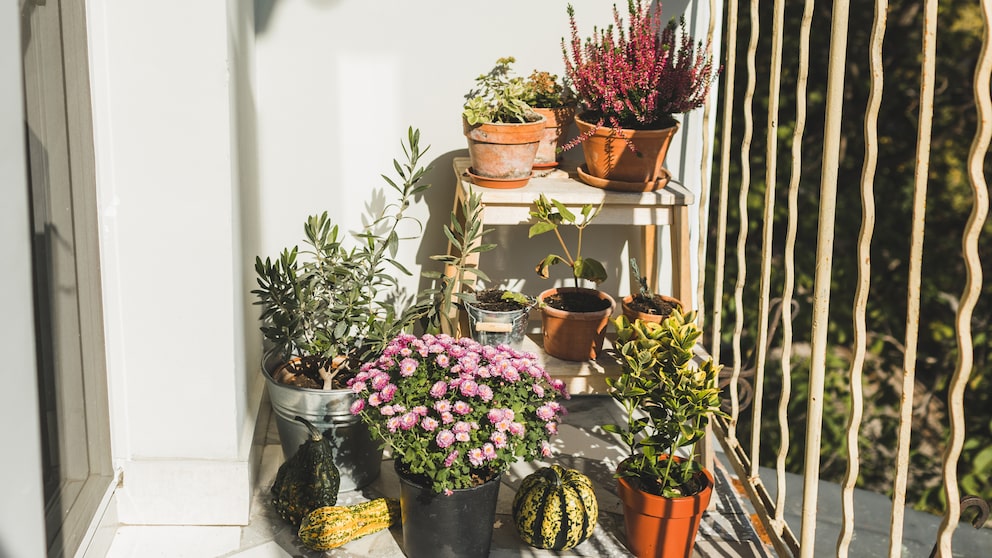April 15, 2025, 2:01 pm | Read time: 4 minutes
Potted plants can bring a Mediterranean or even tropical flair to balconies and terraces, depending on the type of plant. Palms, oleanders, and lemon trees, however, have specific care requirements due to their container living. myHOMEBOOK outlines common mistakes in caring for potted plants.
They come in all shapes, sizes, and colors: containers or large pots for plants in our green living room. The material can also vary greatly. Containers are typically made from concrete, clay, or plastic, each with its own advantages and disadvantages. While plastic pots are lighter and usually don’t crack in winter, clay pots, with their porous structure, provide better moisture balance and simply look more attractive. Concrete pots, on the other hand, are more suitable for permanent outdoor use. But what mistakes can be made with pot plants, regardless of the pot material?
Overview

What to Consider When Repotting Potted Plants

Is watering after rain necessary?

Planting and Care Tips for the Primeval Tree Fern
Common Mistakes with Pot Plants
Incorrect Watering
Beginners with potted plants often assume that more is better. However, most pot plants don’t need water every day. Depending on the pot size, substrate, and plant type, the water requirement can vary significantly. Overwatering can lead to waterlogging and root rot, which is often worse than a few days of dryness in the pot. To check if the container plant really needs water, a simple trick helps: push your finger four to five centimeters into the soil to see if it’s dry beneath the top layer. Only then is watering necessary. And on hot and dry days, a bit more water is, of course, allowed.
No Drainage
A common mistake with container plants is also a lack of or poor drainage. This problem often goes hand in hand with incorrect watering. If the plants have been overwatered and the water cannot drain well, waterlogging in the pot is inevitable. Unfortunately, many plants we bring home from the hardware store also lack drainage. Therefore, repotting soon after purchase is definitely advisable. For good drainage, a layer through which excess water can drain well, various materials are suitable:
- Clay shards
- Expanded clay
- Coarse gravel
- Ready-made drainage inserts made of plastic
- Sand
Wrong Pot Size
This mistake is more common than you might think. In fact, most plants come home from the garden center in a pot that’s too small. But fast-growing container plants often outgrow their pots before we notice. It helps to occasionally lift the plant with its root ball out of the pot to check how dense the root system is against the pot’s interior. Roots growing out of the drainage hole are also a clear sign that a new pot is needed. However, the new container shouldn’t be too large either. The larger amount of soil surrounding the plant retains more water, which can be too much for many plant species. As a rule of thumb: when repotting, choose a pot that is two to four centimeters larger in diameter than the previous one.
Incorrect Winter Storage
Mediterranean or even tropical plants have no place on the balcony in winter. By October at the latest, they should be moved to a suitable winter storage. Most plants prefer it cool in winter, but not frosty. Those with a bright garden shed with light insulation, an unheated hallway, or a greenhouse can overwinter their plant charges there. It’s important not to forget watering, even though the required amount is significantly less in winter. Additionally, citrus and tropical plants are prone to pests in winter storage and should be regularly checked for them.

